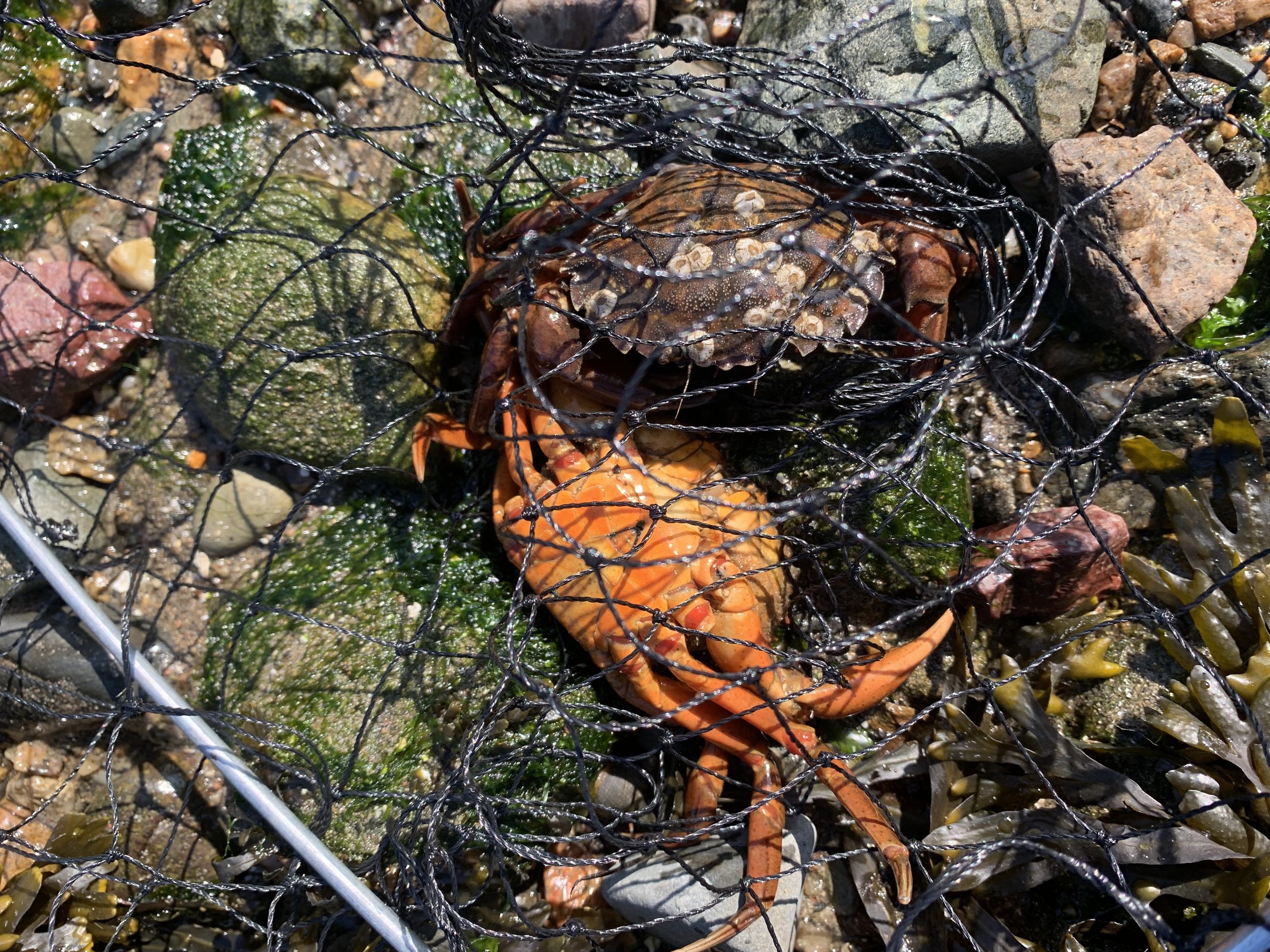How to Trap Your Own Green Crabs
Trapping your own green crabs is a breeze if you know where to look and have the right supplies. This guide covers the best way to trap green crabs as a recreational trapper without a boat or professional gear. Interested in trapping commercially? Check out our Harvester Hub and Harvester Advisory Network for free resources, events, and networking opportunities.
Step 1: Check to see if you need a letter of authorization
In Massachusetts, you’ll need a letter of authorization from the DMF to trap green crabs. The state uses this letter of authorization to track who is recreationally harvesting green crabs and applies to recreational and commercial trappers. Follow the steps on this page to obtain the letter.
Other states in New England do not require a letter of authorization but it’s a good idea to double-check with your state and local fisheries authorities in case rules have changed.
STep 2: Get a Trap
While we’d have different advice for commercial trappers, we recommend recreational trappers start small. This pop-up trap from Jmkcoz is one of our favorites and folds up small enough to fit into a backpack. If you’re looking to soak your trap or catch green crabs more frequently, we recommend investing in a small green crab trap from Ketcham Supply. Make sure you also bring some fishing rope for your trap to retrieve it!
Alternatively, if you find the right spot you can forage for green crabs with a net or your hands. Many New England tide pool environments will be teeming with green crabs. Lift up a few rocks and you’ll start to see them everywhere.
Small green crabs like this one are popular in tide pools. These small crabs are easier for kiddos to pick up and are fantastic fried whole.
Step 3: Pick Up Some Bait
Green crabs like some strange snacks. We’ve had luck with hot dogs, fried chicken, and mackerel bait. Check out this blog post by Jimmy Elliott to learn more about recommended baits.
Step 4: Find a Harvest Spot
Your local fishing pier could be the perfect spot to trap green crabs! Green crabs like to hang out in areas with spots to hide (think eelgrass, fishing piers, rocky areas). They’re also common in estuarine areas with brackish waters so check out the mouth of small rivers or inlets (as long as it’s permitted).
You can even harvest green crabs at some beaches but keep in mind that the green crabs like hiding spots. Some of our favorite Mass spots to catch green crabs include the Castle Island Fish Pier and Boston Harbor Islands.
Step 5: Soak the Trap
Once your trap is loaded with bait and in the right spot, let it “soak” in the water for at least 20 minutes. After 20 minutes, check the trap for any crab activity. If you’ve selected a good spot, your trap might be nearly full after 20 minutes.
Step 6: Check the Crabs
Make sure that you’re trapping green crabs and not a native species. The easiest way to ID green crabs is to see if they have five points on either side of their eyes. Green crabs are not always green so checking for five points is the safest bet in New England.
Illustration by Jeff Adams (Washington Sea Grant), Photo of European Green Crab by Director Mary Parks
If you’re in New England, make sure what you’re catching is a green crab and not a native mud crab. Mud crabs look very similar to green crabs but have four points, rounder claws, and fuzzy legs. Mud crabs are very common in the intertidal. Check out this guide for more information on Panopeus herbstii (Atlantic mud crab).
NATIVE MUD CRAB
Notice the fuzzy legs and rounded claws
NATIVE MUD CRAB
Take a look at the crab’s four points
STEP 7: Pack Them Up
Like any shellfish, it’s important to keep your green crabs cold as soon as they exit the water. However, you also don’t want them to come in contact with fresh water. We recommend bringing a cooler with sealed bags of ice inside and a layer of seaweed between the crabs and the ice. That way the crabs will stay cool until you’re able to get home and safely pack them in your fridge.
Step 8: Eat & Enjoy!
Once you’ve taken your green crabs home, get cooking! Check out our “Eat” page for recipes and resources






